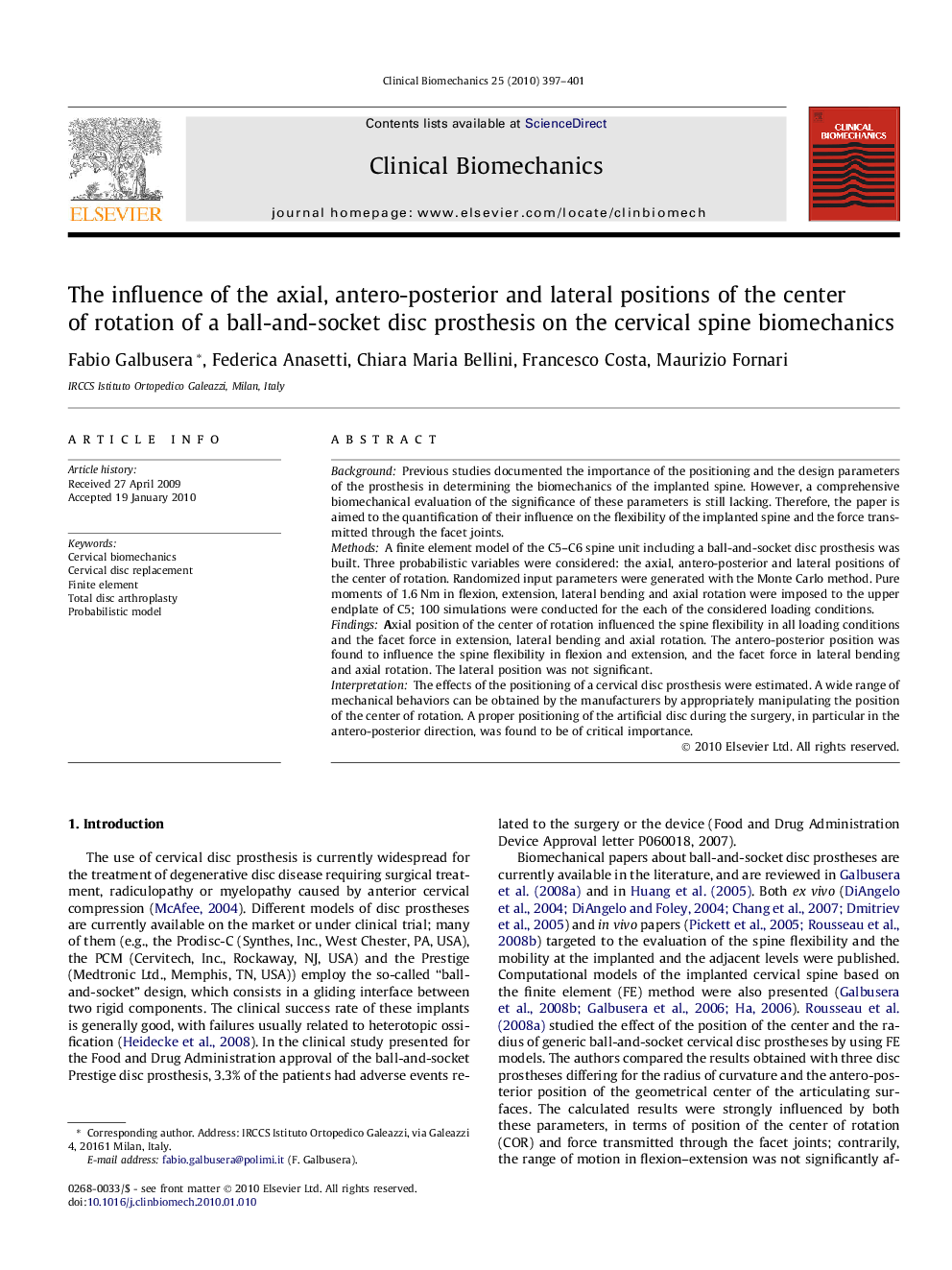| Article ID | Journal | Published Year | Pages | File Type |
|---|---|---|---|---|
| 4051037 | Clinical Biomechanics | 2010 | 5 Pages |
BackgroundPrevious studies documented the importance of the positioning and the design parameters of the prosthesis in determining the biomechanics of the implanted spine. However, a comprehensive biomechanical evaluation of the significance of these parameters is still lacking. Therefore, the paper is aimed to the quantification of their influence on the flexibility of the implanted spine and the force transmitted through the facet joints.MethodsA finite element model of the C5–C6 spine unit including a ball-and-socket disc prosthesis was built. Three probabilistic variables were considered: the axial, antero-posterior and lateral positions of the center of rotation. Randomized input parameters were generated with the Monte Carlo method. Pure moments of 1.6 Nm in flexion, extension, lateral bending and axial rotation were imposed to the upper endplate of C5; 100 simulations were conducted for the each of the considered loading conditions.FindingsAxial position of the center of rotation influenced the spine flexibility in all loading conditions and the facet force in extension, lateral bending and axial rotation. The antero-posterior position was found to influence the spine flexibility in flexion and extension, and the facet force in lateral bending and axial rotation. The lateral position was not significant.InterpretationThe effects of the positioning of a cervical disc prosthesis were estimated. A wide range of mechanical behaviors can be obtained by the manufacturers by appropriately manipulating the position of the center of rotation. A proper positioning of the artificial disc during the surgery, in particular in the antero-posterior direction, was found to be of critical importance.
